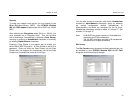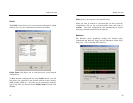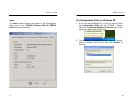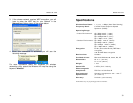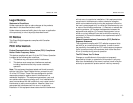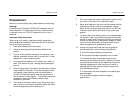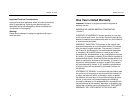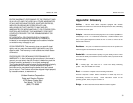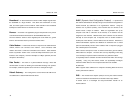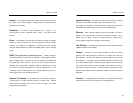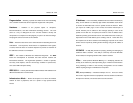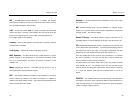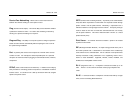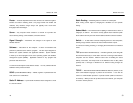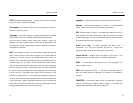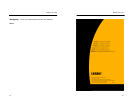
Wireless PC Card
39
Broadband – A data-transmission scheme in which multiple signals share
the bandwidth of a single medium. This allows the transmission of voice,
data, and video signals over that medium. Cable television uses broadband
techniques to deliver dozens of channels over one cable.
Browser – A browser is an application program that provides a way to look
at and interact with all the information on the World Wide Web or PC.
The word “browser” seems to have originated prior to the Web as a generic
term for user interfaces that let you browse text files online.
Cable Modem – A device that connects a computer to the cable television
network, which in turn connects to the Internet. Once connected, cable
modem users have a continuous connection to the Internet. Cable modems
feature asymmetric transfer rates: around 36 Mbps downstream (from the
Internet to the computer), and from 200 Kbps to 2 Mbps upstream (from the
computer to the Internet).
Data Packet – One frame in a packet-switched message. Most data
communication is based on dividing the transmitted message into packets.
For example, an Ethernet packet can be from 64 to 1518 bytes in length.
Default Gateway – The routing device used to forward all traffic that is
not addressed to a station within the local subnet.
Wireless PC Card
40
DHCP (Dynamic Host Configuration Protocol) – A protocol that
lets network administrators centrally manage and automate the assignment of
Internet Protocol (IP) addresses in an organization’s network. Using the
Internet’s set of protocol (TCP/IP), each machine that can connect to the
Internet needs a unique IP address. When an organization sets up its
computer users with a connection to the Internet, an IP address must be
assigned to each machine. Without DHCP, the IP address must be entered
manually at each computer and, if computers move to another location in
another part of the network, a new IP address must be entered. DHCP lets a
network administrator supervise and distribute IP addresses from a central
point and automatically sends a new IP address when a computer is plugged
into a different place in the network.
DHCP uses the concept of a “lease” or amount of time that a given IP address
will be valid for a computer. The lease time can vary depending on how long
a user is likely to require the Internet connection at a particular location.
It’s especially useful in education and other environments where users change
frequently. Using very short leases, DHCP can dynamically reconfigure
networks in which there are more computers than there are available
IP addresses.
DHCP supports static addresses for computers containing Web servers that
need a permanent IP address.
DNS – The Domain Name System (DNS) is the way that Internet domain
names are located and translated into an Internet Protocol (IP) address.
A domain name is a meaningful and easy-to-remember “handle” for an
Internet address.



